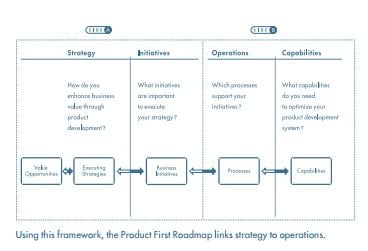Welcome to this week's TBT blog post, originally published in 2012.
 I have a problem. I really like to eat and most of the choices I make are less than healthy. I also find myself challenged to exercise regularly. Naturally when I visit my doctor it can be a little uncomfortable. He has mentioned that my cholesterol is a little high and that I might want to consider medication to regulate my levels. I see commercials telling me that it is ok to take these kinds of medications and that you can do everything the right way and still have high cholesterol. I can't help but think this is really my fault and that the real answer is to exhibit some discipline to address my issues. I am sure it is different for everyone but this is my thought. At SolidWorks World, I have seen a lot of applications that strike me as Lipitor for business process. They solve processes spawned by unhealthy behavior and by using these applications they perpetuate the behavior. While some of these applications are very clever with nice interfaces and seem to do what they advertise, I can't help but feel they are missing the point of business process improvement. Applications like Product Lifecycle Management (PLM) are predicated on aligning business process across the enterprise with the capabilities of technology, and these types of applications avoid this step. This blog will explore the concept of whether point solutions that support dysfunctional business processes are the correct way or if it is realistic to expect companies to bite the bullet and put their houses in order.
I have a problem. I really like to eat and most of the choices I make are less than healthy. I also find myself challenged to exercise regularly. Naturally when I visit my doctor it can be a little uncomfortable. He has mentioned that my cholesterol is a little high and that I might want to consider medication to regulate my levels. I see commercials telling me that it is ok to take these kinds of medications and that you can do everything the right way and still have high cholesterol. I can't help but think this is really my fault and that the real answer is to exhibit some discipline to address my issues. I am sure it is different for everyone but this is my thought. At SolidWorks World, I have seen a lot of applications that strike me as Lipitor for business process. They solve processes spawned by unhealthy behavior and by using these applications they perpetuate the behavior. While some of these applications are very clever with nice interfaces and seem to do what they advertise, I can't help but feel they are missing the point of business process improvement. Applications like Product Lifecycle Management (PLM) are predicated on aligning business process across the enterprise with the capabilities of technology, and these types of applications avoid this step. This blog will explore the concept of whether point solutions that support dysfunctional business processes are the correct way or if it is realistic to expect companies to bite the bullet and put their houses in order.
One of the areas where this type of technology is growing is in the area of enterprise search. I am familiar with at least three technologies in this area and we actually developed something like this for John Deere several years ago. The logic is that you have numerous systems throughout your enterprise and you need to be able to search across all these applications for information. I think this is sound logic but I think there is potential for abuse or for enabling bad practice.  Several years ago, PTC developed a methodology for adopting enterprise PLM called Product First. Obviously, they developed this methodology to promote the adoption of Windchill but there is still merit to some of the things they advocate in the methodology. Specifically, they tout that the first step in moving toward a product development system is to put your data in a centralized vault. The value of this is fairly obvious. By putting all your data in one central repository you can apply consistent access logic to the data and you have the ability to search the data to locate needed information. When you use a search tool that finds the data where it lies, at a minimum, you circumvent access logic and you enable information to exist outside the control of the enterprise system. I discussed this concern with the prolific Oleg Shilovitsky from Inforbix and he felt that the nature of the enterprise is a huge inhibitor of having a centralized system. He felt the complexity of the environment and the conservative nature of the enterprise organization make it very difficult to have one single system that controls all information. I do think this is a realistic assessment which makes these types of tools useful, as long as companies do not take these applications as a license to circumvent or abandon the enterprise system. I also still feel that security could be a real issue with these types of enterprise search tools.
Several years ago, PTC developed a methodology for adopting enterprise PLM called Product First. Obviously, they developed this methodology to promote the adoption of Windchill but there is still merit to some of the things they advocate in the methodology. Specifically, they tout that the first step in moving toward a product development system is to put your data in a centralized vault. The value of this is fairly obvious. By putting all your data in one central repository you can apply consistent access logic to the data and you have the ability to search the data to locate needed information. When you use a search tool that finds the data where it lies, at a minimum, you circumvent access logic and you enable information to exist outside the control of the enterprise system. I discussed this concern with the prolific Oleg Shilovitsky from Inforbix and he felt that the nature of the enterprise is a huge inhibitor of having a centralized system. He felt the complexity of the environment and the conservative nature of the enterprise organization make it very difficult to have one single system that controls all information. I do think this is a realistic assessment which makes these types of tools useful, as long as companies do not take these applications as a license to circumvent or abandon the enterprise system. I also still feel that security could be a real issue with these types of enterprise search tools.
Other types of gap application include ad hoc process and data capture tools. The concept behind these applications is that process and creation is too fluid for Enterprise PLM tools or that some companies are too immature to have these systems in place so they need some sort of stop-gap measure to support their development process. Ad hoc workflow and data capture application fall into this category. Again, I was impressed with the execution of these solutions but I can't help but question the value of these tools outside the context of an enterprise PLM application. If you play out the use of these types of tools into the future, you will end up with severe tool fragmentation with data coming from all directions and we are back to the islands of automation. I guess you could purchase one of the enterprise search tools from the previous paragraph to try and tie it all together but I don't think this is optimal. I have been approached numerous times by mid-level managers looking for stop-gap solutions to staunch the bleeding of their dysfunctional processes. These types of solutions address that need but miss the bigger picture. Again, I think there is value in putting the enterprise system in place to address these types of issues even if you are a small organization. In fact, it is a lot easier to do this when you are small rather than later in a company's development. Trying to implement enterprise PLM in a midsize or large company can be very challenging. Using these types of tools to further delay this decision is not a best practice. I do get that there is information that is created outside the context of PLM, CRM, or ERP, but there needs to be a way to integrate rather than create separate applications. If there is value in capturing this information or process, then it should be in the enterprise systems.
At the end of the day, I think these applications can be useful tools for product development companies but I think it is very dangerous to view these tools as an alternative to having enterprise solutions. I also think that the proliferation of tools like these should be a wakeup call to PLM vendors. Obviously, these companies are identifying gaps in enterprise software and exploiting these shortcomings to develop point solutions. Oleg's critique of enterprise software is very accurate and the successful vendors will need to become more nimble and responsive to the market if the paradigm of enterprise software is to remain viable. Otherwise, we could end up with ad hoc systems that let process occur in a more organic way with systems to harvest the results for management purposes. I am sure Lipitor is a very valuable medication when used properly, but I do not think it is a good idea to use it in lieu of eating responsibly and exercising regularly. I think it is the same with these point solutions for business processes. When evaluating these applications, consider how they fit into the entire enterprise and how they support best practices for product development.



